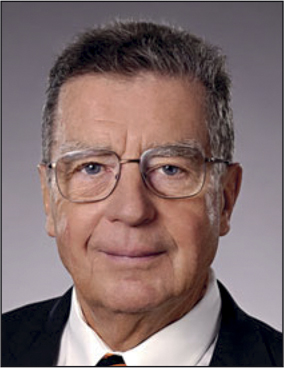
The Materials Research Society’s (MRS) David Turnbull Lectureship Award recognizes the career of a scientist who has made outstanding contributions to understanding materials phenomena and properties through research, writing, and lecturing, as exemplified by the late David Turnbull of Harvard University. Sigurd Wagner, Princeton University, has been selected to give the Turnbull Lecture at the 2017 MRS Fall Meeting in Boston. He is cited “for groundbreaking contributions to the science and technology of thin-film photovoltaics, amorphous silicon and flexible large-area electronics.”
Wagner received his PhD degree in physical chemistry in 1968 from the University of Vienna, Austria. Following postdoctoral research at The Ohio State University, he worked from 1970 to 1978 at Bell Telephone Laboratories within their first silicon dynamic random-access memory project and then on devices of chalcopyrite-type semiconductors. In 1978, he joined the Solar Energy Research Institute (now NREL) in Golden, Col., as the founding chief of its Photovoltaic Research Branch. Since 1980, he has been a professor of electrical engineering at Princeton University; in 2015, he became professor emeritus and senior scholar.
Wagner is a Fellow of the American Physical Society and of the Institute of Electrical and Electronics Engineers, and is a corresponding member of the Austrian Academy of Sciences. He has been named the Alexander von Humboldt Foundation Senior Fellow, received the 2009 Nevill F. Mott Lecture Award, and the 2014 International Thin-Film Transistor Conference 10th Anniversary Prize.
His presentation will focus on the evolution of materials tools and how they have aided in our existence. The industrial revolution, crucially reliant on advances in materials, has moved billions of humans from poverty to plenty. With this revolution came an enormous expansion of our tools for studying, making, and using materials. Because materials have such reach over human activity, they inspire teamwork. Increasingly, the ease of collaboration and the many available tools are enabling and encouraging researchers to move back and forth among study, exploration, and application of materials. He will illustrate this through work with solids and liquids; research on electrical, optical, and mechanical properties; and making silicon memory, solar cells, microfluidic devices, flexible and stretchable electronic surfaces, and large-area sensor arrays.


